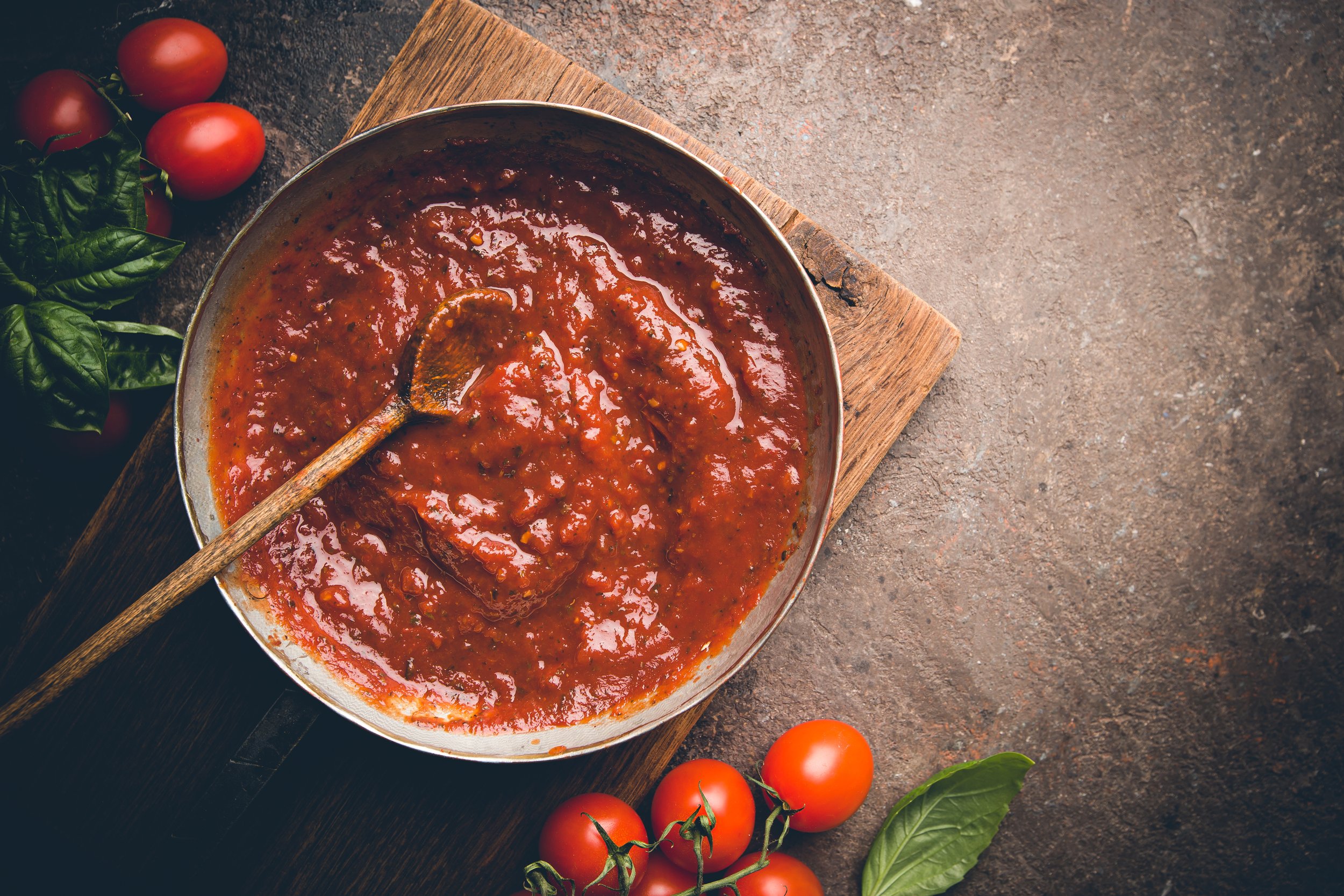Amorgia
(Amogio, Ammoghio, Ammoglio, Amogiu)
From the kitchen of Beth Ann Mastromarino
Behind the Dish
Here we feature a Sicilian marinade recipe from Beth Ann Mastromarino who has translated from memory what was never actually written down. Beth’s Sicilian grandfather, who came over by boat in 1922 from Alcamo, Italy, was the only one in her family who ever made this marinade and this was always once a year for a massive family summer picnic. In preparation for the marinade, tomatoes were gathered from an aunt’s garden and herbs were ground in a mortar and pestle. Note: The single mint leaf in this recipe is a regional touch. On consultation with members of Coro d’Italia Beth finds that there are regional variations - a sprig of rosemary, for instance, or a slice of lemon as a final embellishment.
Everything about this recipe is approximate, and to taste, including the spelling of the name! I had never seen the name written down before (or the recipe itself). I sent word to the members of Coro D’Italia to ask—I had to describe the recipe and purpose—and quickly received responses, each with a different spelling! My family pronounces it u morgia (ooo MOH-juh). A quick list of name variations: Amorgia, Amogio, Ammoghio,Ammoglio, Amogiu.
- Beth Ann Mastromarino
Ingredients
2 cups of diced tomatoes, (canned is fine)
4 Tbsp. of olive oil
Several cloves of garlic to taste, at least 2 (between minced and paste)
3 Tbsp. fresh parsley
3 Tbsp. fresh basil
Sprig of fresh mint 3-4
Tbsp. fresh lemon juice
Salt
Pepper
Red Pepper flakes
For dried herbs, the measurement is reduced by a third. So, 1 Tbsp. dried for 3 Tbsp. fresh.
Instructions
Everything is combined with a mortar and pestle. I still have my grandfather’s (shown above), and it only comes down off the shelf for this purpose! But a pulse setting on a blender should work, too.
The garlic, parsley, basil and mint are combined first, then the olive oil, then the lemon juice, then the tomatoes. This is the order so you can smell when the herbs have been ground enough, then add the liquid ingredients, from least to most. Salt, pepper and red pepper flakes are added last.
EVERYTHING is to taste, including the parsley, basil and mint. Now, that I’m explaining it, the process was really done by smell—if the basil was weak, more would be added, if the parsley was too strong, you can take some out, and if everything is just too much, more tomatoes and lemon can be added. The recipe was slightly different each time. This was the only time I recall fresh mint being used, and it was used sparingly, added by the leaf.
Once combined, it is brushed directly onto the food being grilled, usually on well-drained, extra-firm tofu, fish or chicken. It can also be used to marinate the food overnight. Any leftover can be used as a bruschetta to top toasted Italian bread (though not if the topping has touched raw poultry or meat).
Mangia!


